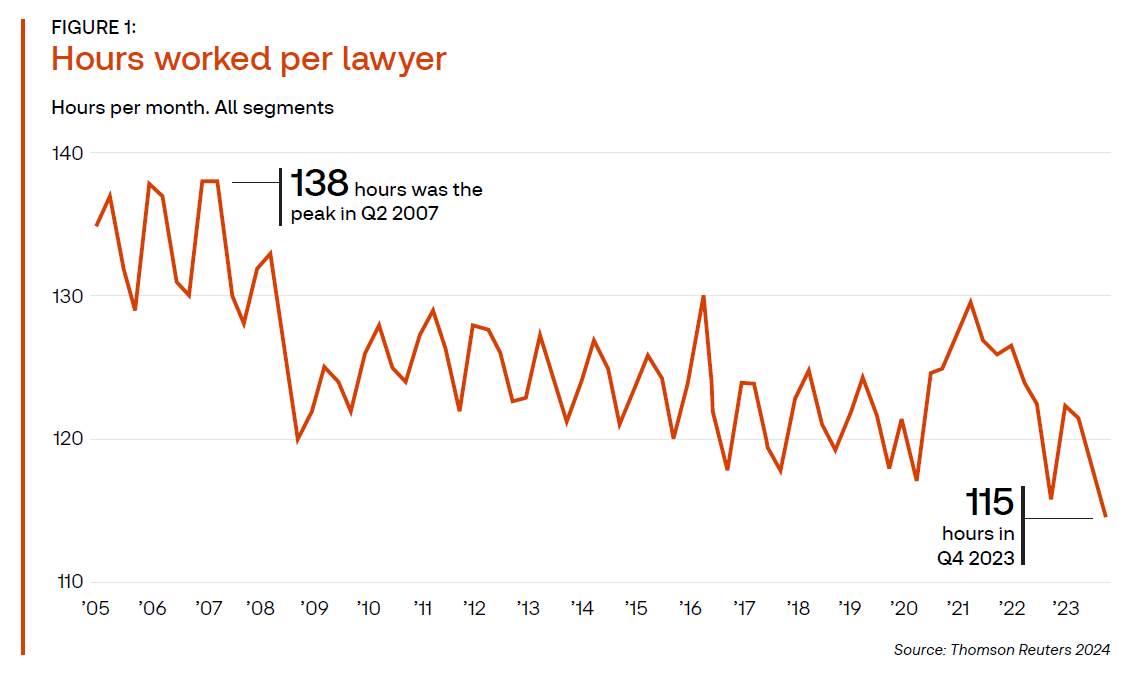A new metric, the relative performance measure, offers a better way to evaluate lawyers' contributions to their firms' financial performance
Law firms have long relied on the number of hours billed by their lawyers as a key measure of productivity and profitability. However, this metric has several limitations, especially in the face of changing client expectations, new pricing models, and the advent of artificial intelligence (AI) and generative AI (GenAI) that can automate and accelerate legal tasks.
The Relative Performance Measures report, published by the Thomson Reuters Institute, introduces a new metric, the relative performance measure (RPM), that aims to capture the true value of lawyers’ work — not just the time they spend on it. RPM is a score that measures a lawyer’s relative performance in generating fees and collecting them, compared to their peers in the same segment, practice group, office location, or lawyer-title class.
Key takeaways
-
-
- The RPM metric has several advantages over traditional productivity metrics.
- The new metric is more aligned with the outcomes and profitability of legal work, rather than the inputs and hours.
- The metric is future proof. It can account for different pricing arrangements, is more resilient to macro-economic factors, and will adapt to the impact of AI and GenAI on how legal work is performed and billed.
-

The report also demonstrates how RPM can be used to analyze and improve the performance of lawyers, practice groups, office locations, and entire law firms. By utilizing RPM, law firms can identify their relative strengths and weaknesses, helping them identify and take actions to enhance their profitability and competitiveness among their peer firms.
For example, by understanding RPM in their firm, leaders can recognize and reward high-performing lawyers who may otherwise be overlooked by traditional performance metrics. Firm leaders also can diagnose and address the root causes of low-performing lawyers, such as poor collections, low billing rates, or inefficient work processes.
By utilizing RPM, law firms can identify their relative strengths and weaknesses, helping them identify and take actions to enhance their profitability and competitiveness among their peer firms.
Further, by looking at RPM scores of individual timekeepers and their ability to contribute to the firm’s financial performance, firm leaders can better optimize the staffing and leverage of the legal matters on which they’ve been hired. From there, they can also benchmark and compare their performance against peer firms and identify best practices and areas for improvement or expansion.
Importantly, the report concludes that RPM is not a one-size-fits-all metric, but rather a valuable tool that complements other qualitative and quantitative measurements of lawyer performance. RPM is not intended to replace tracking of the billable hour, but rather to offer a better way for firms to measure lawyer performance in the age of AI.
By adopting RPM, law firms can prepare for an AI-driven future in which they can deliver more value to their clients and more profitability to their partners, even if they’re spending less time doing so.
You can download a copy of the Thomson Reuters Institute’s “Relative Performance Measures” report by filling out the form below:







